#samothrace
Photo

‘Winged Victory of Samothrace,’ (c. 200–190 BC)
Sculpture from the Hellenistic era depicting Goddess of victory, Nike,
Constructed of Parian marble, h: 328 cm,
Discovered in 1863 on the Greek island of Samothrace in the northern Aegean Sea, by Charles Champoiseau,
Musée du Louvre, Paris, France (1886 – present).
#winged victory of samothrace#art#sculpture#hellenism#hellenistic era#goddess#nike#ancient greece#ancient history#ancient art#marble#samothrace#nike of samothrace#charles champoiseau#winged being#louvre#paris#photography#art photography
3K notes
·
View notes
Text

Hieron at the Sanctuary of the Great Gods (Samothrace, Greece)
#isaac.jpg#archaeology#classical archaeology#greek#samothrace#sanctuary of the great gods#hellenistic
239 notes
·
View notes
Text
youtube
DOOM
2 notes
·
View notes
Photo

#architecture#living room#design#interior design#decor#home decor#art#d#white#Winged Victory of Samothrace#victory of samothrace#samothrace
33 notes
·
View notes
Photo


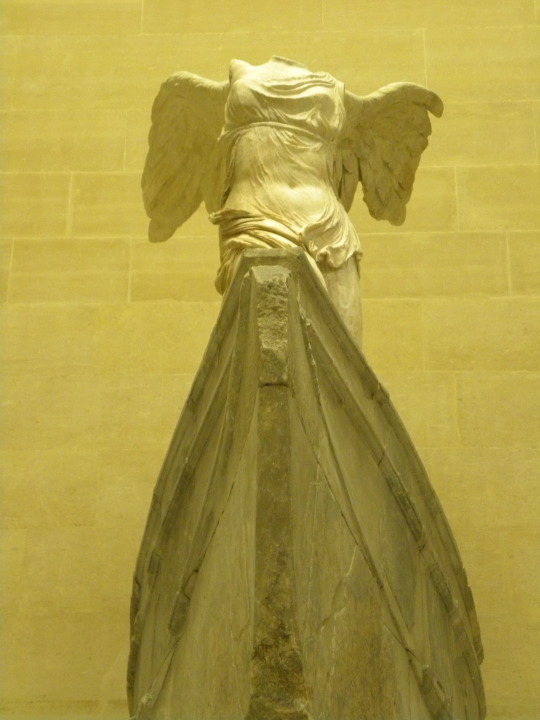

Victoire de Samothrace.
#original photography#art#sculpture#2nd century BC#Samothrace#Greece#Nike#Paros marble for the statue#Lartos marble for the prow#Old pictures from an old visit to the Louvre I thought I might share#my pictures
14 notes
·
View notes
Photo
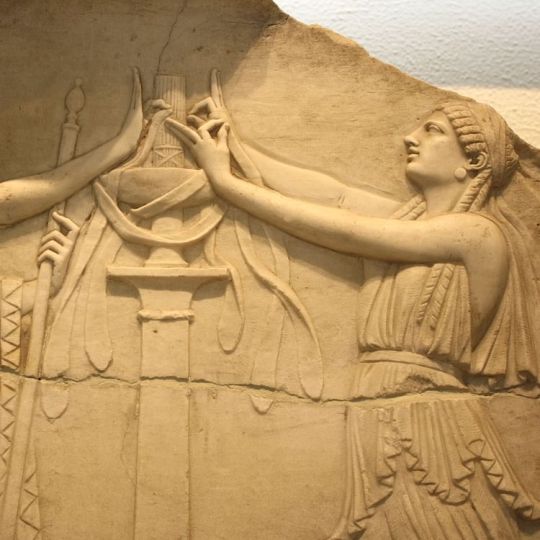
Religion dans la Grèce Antique
Dans le monde grec antique, la religion était personnelle, directe et présente dans tous les domaines de la vie. Avec des rituels formels comprenant des sacrifices d'animaux et des libations, des mythes expliquant les origines de l'humanité et donnant aux dieux un visage humain, des temples qui dominaient le paysage urbain, des festivals urbains et des compétitions sportives et artistiques nationales, la religion n'était jamais loin de l'esprit d'un Grec dans l'antiquité. Bien que chacun ait pu décider du degré de sa croyance religieuse et que certains aient pu être complètement sceptiques, certains principes fondamentaux devaient être suffisamment répandus pour que le gouvernement et la société grecs aient pu fonctionner : les dieux existaient, ils pouvaient influencer les affaires humaines et ils accueillaient et répondaient aux actes de piété et de culte.
Lire la suite...
2 notes
·
View notes
Text

Samothrace - Reverence To Stone (20 Buck Spin, 2012)
youtube
0 notes
Text
Winged Victory of Samothrace
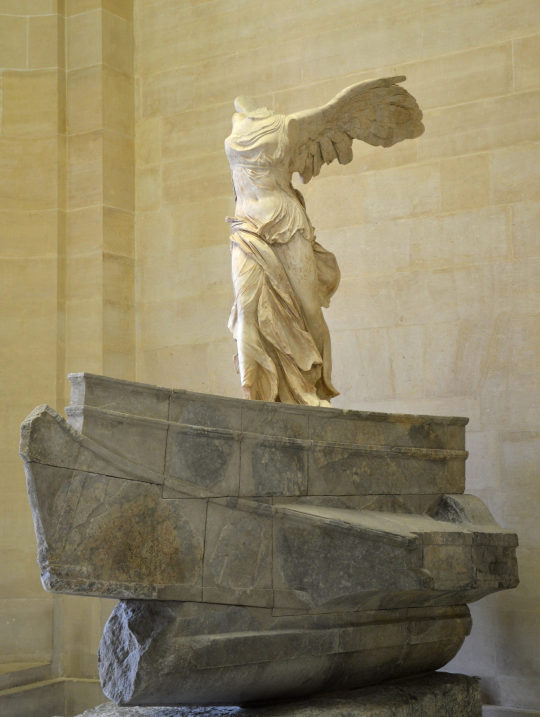
Winged Victory of Samothrace (200–190 BC). Parian marble, 244 cm. Louvre, Paris.
The Winged Victory of Samothrace, also known as the Nike of Samothrace, stands as one of the most celebrated sculptures of Hellenistic art. Discovered in 1863 on the island of Samothrace, this masterpiece dates back to the 2nd century BC. It is prominently displayed at the Louvre Museum in Paris, commanding awe with its dramatic and masterful portrayal of the Greek goddess Nike.
The Essence of Movement and Triumph:
What immediately captures the viewer’s eye is the dynamic sense of movement and fluidity that the sculpture exudes. Nike appears as if she has just landed on the prow of a ship, her garments fluttering around her in a gust of wind. This sense of motion is not just a technical achievement but also serves to convey the feeling of triumph and victory that Nike embodies.
Anatomy and Drapery:
The sculpture's anatomical precision is noteworthy. Although the head and arms of Nike are missing, the body's posture suggests a forward momentum, with the right leg stepping out and the clothes clinging to the form beneath. The intricacy of the drapery, with its deep folds and waves, contrasts with the smooth, bare skin, creating a play of textures that is both realistic and artistically expressive.
Symbolism and Context:
The Winged Victory was likely created to commemorate a naval victory, as evidenced by its original placement on a ship-like base. The goddess Nike was a symbol of victory and success, and her depiction in this form was meant to not only honor the victors but also to inspire and uplift the viewers. The absence of her head and arms, while a result of the passage of time and damage, adds a sense of mystery and timelessness to the sculpture.
The Impact of Time:
The Winged Victory of Samothrace is a testament to the lasting power of art. Despite its incompleteness, or perhaps because of it, the sculpture engages viewers' imaginations, inviting them to reconstruct the missing pieces in their minds. The weathered texture of the marble adds a layer of historical depth, reminding us of its journey through time.
Let's Discuss:
What emotions or thoughts does the Winged Victory of Samothrace evoke in you, and how do you imagine this masterpiece in its original, intact form?
#ArtHistory#HellenisticArt#GreekSculpture#WingedVictory#Samothrace#MuseumLovers#LouvreMuseum#AncientArt#SculptureAnalysis#ArtDiscovery
0 notes
Text
Pondering the Mysteries
Have laptop will ponder the Mysteries of Samothrace, Eleusis and Orpheus and modern initiatory traditions…
Image by philm1310 from Pixabay
We the Mystaitreadthe Sacred WayAthens to Eleusisour song suspendedin the miststeps dustedin ripples of soilhidden in timein crystalline sandsat the temple gatewe standOfferingto resplendent Demetersacred hymnswe sing to greet herand to her daughterKorewho…

View On WordPress
1 note
·
View note
Text



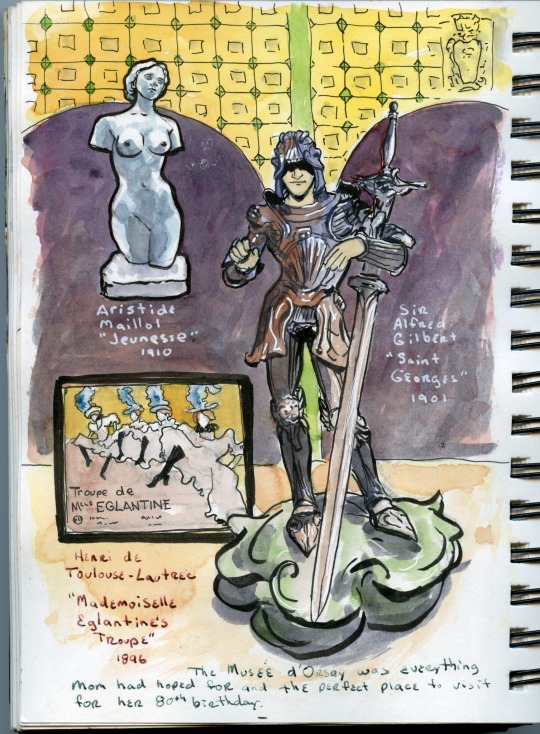

Five years ago, I got to take my mom to Paris for her 80th birthday and I still love looking back at my sketchbook memories.
I’ve grown a lot as an artist since then, but they still make me smile.
#art#art nouveau#watercolor art#traditional art#watercolor#artists on tumblr#journaling#sketchbook#travel journal#paris#the louvre#winged victory of samothrace
1K notes
·
View notes
Text

Foundations of the Rotunda of Arsinoë (Arsinoëion) at the Sanctuary of the Great Gods (Samothrace, Greece), foregrounding the Aegean Sea
Arsinoë II, a Ptolemy, dedicated this structure, which is the largest covered round building in Greek antiquity. Following the death of her first husband, Lysimachus, Arsinoë returned to Egypt and married her half-brother, Ptolemy II Philadelphus.
#isaac.jpg#archaeology#classical archaeology#greek#samothrace#sanctuary of the great gods#queen arsinoe#arsinoeion
116 notes
·
View notes
Text
youtube
Such a fuckin good album. Too bad they are essentially defunct.
0 notes
Photo

spread my wings and fly away 🪁 . #nikedisamotracia #samothrace #nike #louvre #paris (presso Museo del Louvre) https://www.instagram.com/p/CkRV3PeNTFb/?igshid=NGJjMDIxMWI=
0 notes
Text

Nike of Samothrace
#Nike of Samothrace#louvre#paris#art#statue#sculpture#dark#black and white#bnw#black and white photography#greek mythology
2K notes
·
View notes
Photo

Samothrace
Samothrace (Samothráki) est une île grecque située dans le nord de la mer Égée, qui était importante à l'époque classique en tant que membre de la Ligue de Délos. Son plus grand titre de gloire était d'être un centre de culte favorisé par la Macédoine et visité par des pèlerins de toute la mer Égée. Son nom est aujourd'hui surtout connu pour la magnifique sculpture de Niké hellénistique, la Niké de Samothrace, excavée sur l'île au 19e siècle, et qui est aujourd'hui exposée au Louvre, à Paris.
Lire la suite...
6 notes
·
View notes
Photo
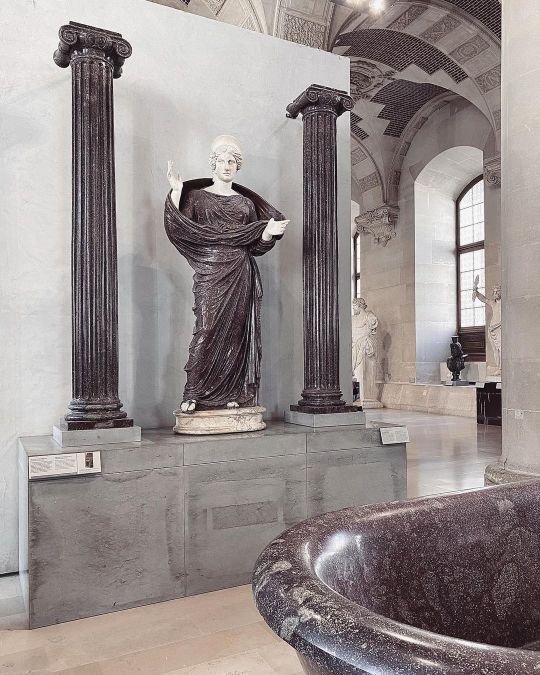
Roman Bath. Iconic Columns. Big foot & Nike La Victorie 🇮🇹🇬🇷🇫🇷 #paris #france #louvre #musée #denon #interiordesign #pillar #marblefloor #greek #roman #mythology #sculptures #femme #colonnes #ioniques #bathtub #mercury #nike #victorie #samothrace #artblogger #travelblogger #mindyyuan #羅馬帝國 #勝利女神 #鎮館之寶 Mercury says hi ❤️🔥 (at Musée du Louvre) https://www.instagram.com/p/Cjq1SWyNsGP/?igshid=NGJjMDIxMWI=
#paris#france#louvre#musée#denon#interiordesign#pillar#marblefloor#greek#roman#mythology#sculptures#femme#colonnes#ioniques#bathtub#mercury#nike#victorie#samothrace#artblogger#travelblogger#mindyyuan#羅馬帝國#勝利女神#鎮館之寶
0 notes